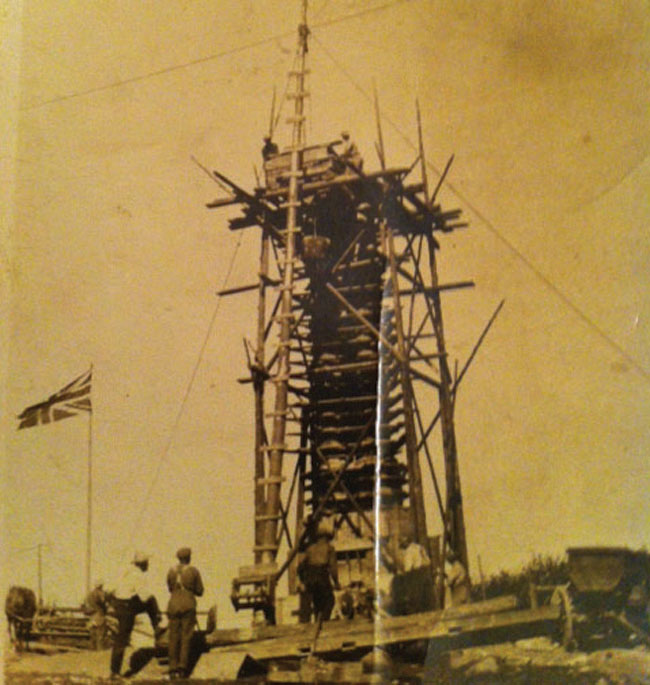The first Indian war memorial

By Dave Mowat
ALDERVILLE FN – On August 25, 1927 the Cobourg World reported on the preliminary ceremonies that had taken place the previous Sunday at the Alderville Reserve, a religious-based ceremony heading up the construction of “the first Indian War Memorial.” The ceremony was arranged by a committee that had been struck by the people of Alderville for the purposes of raising a monument in honour of the great sacrifice of the community’s soldier’s during the Great War of 1914-18.
Lt Col. F.D. Boggs of Cobourg gave the address in which he paid tribute to the splendid work of the Indians in the 40th Regiment. Col. Boggs later presented the silver spade to Mrs. Norman Marsden who, as the Cobourg World reported, “deftly turned the first sod.”
Alf McKeel of Campbellford was the man responsible for providing the expertise, technical advice and design, while the people of the community provided voluntary labour, the meals and the plot of land upon which the monument was to be erected, turning over $800 for the cause. McKeel had already constructed a smaller monument in 1923 at Trent River, in which he had formulated the basic design that would follow on a larger scale at Alderville.
In its final state at its unveiling, the monument represents on top what has been called the “foursquare maximum”, and below that the Holy Trinity represented by tthree globes, and standing high the three pillars representing the three virtues, and below that the stepped base representing the four fundamental freedoms. The monument weighs approximately 468 tons and was constructed in a relatively short period of time between the sod turning of August 21st and the unveiling on September 25th, 1927. As the Cobourg World reported it was a “splendid memorial of concrete and granite” marking “the heroism and sacrifice of nine brave men from the Alnwick Reservation who laid down their lives during the Great War in the cause of freedom and righteousness.”
Over the past 86 years, or four generations, the monument has acted as a beacon, meeting place, a destination, a point of solemn reflection, and a hallowed centre of our community. It bestows upon us a responsibility to look up to it and be reminded of the sacrifice that it represents, when half or more of the able-bodied men in this community signed up for service in 1914 and 1915 to fight overseas. Nine of them would never return, and it’s often too far off in our collective memory to remember the pains of what the Great War must have done to our community, to the wives and mothers, and families, brothers and fathers, sons and daughters.
By 1917 in Canada and Alderville everyone was now experiencing the heavy cost of war. After Vimy Ridge it all changed. So it was in the construction of this “first Indian monument in Canada” that we would remember that ultimate sacrifice from year to year and generation to generation.
Monuments take maintenance and since the year 2000 major renovations have been completed in order that we can maintain this remarkable presence at the heart of our community. It is a reminder of First Nation sacrifices in the defence of Canada.
Don Smoke of Alderville, now 87, signed up for World War II service in Toronto at 19. In crossing the Atlantic in the spring of 1945, it was when he was “halfway across the ocean that VE Day was declared.”
So Don’s job with his regiment was to move into Belgium and then into Holland on demolition work after the war had ended on the European continent. During this time the war was continuing to ravage in the Pacific and signing up for action there crossed his mind, however, the Pacific campaign ended on Aug. 9, 1945.
Two memories still vivid in Don’s mind are when he was cycling in Holland and met a convoy of German prisoners. It struck him at that moment as to who these men were, a hard and vivid memory of the effects of war! The second vivid memory was when Don heard a man playing violin at a soldier’s gathering, and that man ended up being another soldier from Alderville.
Dave Mowat is a council member for Alderville First Nation.


